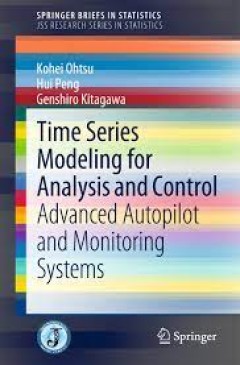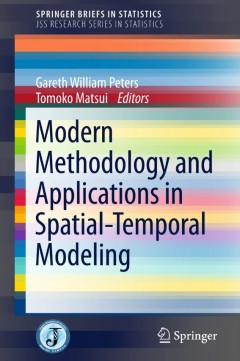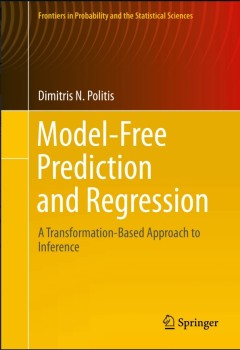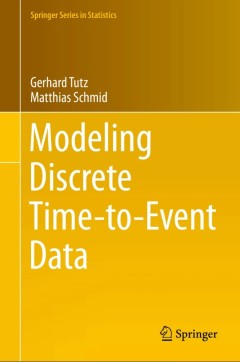Filter by

Introduction to Nonparametric Statistics for the Biological Sciences Using R
This book contains a rich set of tools for nonparametric analyses, and the purpose of this text is to provide guidance to students and professional researchers on how R is used for nonparametric data analysis in the biological sciences: To introduce when nonparametric approaches to data analysis are appropriate To introduce the leading nonparametric tests commonly used in biostatistics and …
- Edition
- -
- ISBN/ISSN
- 978-3-319-30634-6
- Collation
- -
- Series Title
- -
- Call Number
- -

Rankings and Preferences: New Results in Weighted Correlation and Weighted Pr…
This book examines in detail the correlation, more precisely the weighted correlation and applications involving rankings. A general application is the evaluation of methods to predict rankings. Others involve rankings representing human preferences to infer user preferences; the use of weighted correlation with microarray data and those in the domain of time series. In this book we present new…
- Edition
- -
- ISBN/ISSN
- 978-3-662-48344-2
- Collation
- -
- Series Title
- -
- Call Number
- 001.4

A Course in Mathematical Statistics and Large Sample Theory
This graduate-level textbook is primarily aimed at graduate students of statistics, mathematics, science, and engineering who have had an undergraduate course in statistics, an upper division course in analysis, and some acquaintance with measure theoretic probability. It provides a rigorous presentation of the core of mathematical statistics. Part I of this book constitutes a one-semester c…
- Edition
- -
- ISBN/ISSN
- 978-1-4939-4032-5
- Collation
- -
- Series Title
- -
- Call Number
- 519.5 BHA c

Time Series Modeling for Analysis and Control
This book presents multivariate time series methods for the analysis and optimal control of feedback systems. Although ships’ autopilot systems are considered through the entire book, the methods set forth in this book can be applied to many other complicated, large, or noisy feedback control systems for which it is difficult to derive a model of the entire system based on theory in that subj…
- Edition
- -
- ISBN/ISSN
- 978-4-431-55303-8
- Collation
- 63 b/w illustrations, 14 illustrations in colour
- Series Title
- -
- Call Number
- -

Theoretical Aspects of Spatial-Temporal Modeling
This book provides a modern introductory tutorial on specialized theoretical aspects of spatial and temporal modeling. The areas covered involve a range of topics which reflect the diversity of this domain of research across a number of quantitative disciplines. For instance, the first chapter provides up-to-date coverage of particle association measures that underpin the theoretical properties…
- Edition
- -
- ISBN/ISSN
- 978-4-431-55336-6
- Collation
- -
- Series Title
- -
- Call Number
- -

Empirical Modeling and Data Analysis for Engineers and Applied Scientists
This textbook teaches advanced undergraduate and first-year graduate students in Engineering and Applied Sciences to gather and analyze empirical observations (data) in order to aid in making design decisions. While science is about discovery, the primary paradigm of engineering and "applied science" is design. Scientists are in the discovery business and want, in general, to understand the …
- Edition
- -
- ISBN/ISSN
- 978-3-319-32768-6
- Collation
- 40 b/w illustrations, 61 illustrations in colour
- Series Title
- -
- Call Number
- -

Modern Methodology and Applications in Spatial-Temporal Modeling
This book provides a modern introductory tutorial on specialized methodological and applied aspects of spatial and temporal modeling. The areas covered involve a range of topics which reflect the diversity of this domain of research across a number of quantitative disciplines. For instance, the first chapter deals with non-parametric Bayesian inference via a recently developed framework known a…
- Edition
- 1
- ISBN/ISSN
- 978-4-431-55338-0
- Collation
- XV, 111
- Series Title
- SpringerBriefs in Statistics
- Call Number
- -

Model-Free Prediction and Regression
The Model-Free Prediction Principle expounded upon in this monograph is based on the simple notion of transforming a complex dataset to one that is easier to work with, e.g., i.i.d. or Gaussian. As such, it restores the emphasis on observable quantities, i.e., current and future data, as opposed to unobservable model parameters and estimates thereof, and yields optimal predictors in diverse set…
- Edition
- 1
- ISBN/ISSN
- 978-3-319-21346-0
- Collation
- XVII, 246
- Series Title
- Frontiers in Probability and the Statistical Sciences
- Call Number
- -

Modeling Binary Correlated Responses using SAS, SPSS and R
Statistical tools to analyze correlated binary data are spread out in the existing literature. This book makes these tools accessible to practitioners in a single volume. Chapters cover recently developed statistical tools and statistical packages that are tailored to analyzing correlated binary data. The authors showcase both traditional and new methods for application to health-related resear…
- Edition
- 1
- ISBN/ISSN
- 978-3-319-23804-3
- Collation
- XXIII, 264
- Series Title
- ICSA Book Series in Statistics
- Call Number
- -

Modeling Discrete Time-to-Event Data
This book focuses on statistical methods for the analysis of discrete failure times. Failure time analysis is one of the most important fields in statistical research, with applications affecting a wide range of disciplines, in particular, demography, econometrics, epidemiology and clinical research. Although there are a large variety of statistical methods for failure time analysis, many techn…
- Edition
- 1
- ISBN/ISSN
- 978-3-319-28156-8
- Collation
- X, 247
- Series Title
- Springer Series in Statistics
- Call Number
- -
 Computer Science, Information & General Works
Computer Science, Information & General Works  Philosophy & Psychology
Philosophy & Psychology  Religion
Religion  Social Sciences
Social Sciences  Language
Language  Pure Science
Pure Science  Applied Sciences
Applied Sciences  Art & Recreation
Art & Recreation  Literature
Literature  History & Geography
History & Geography